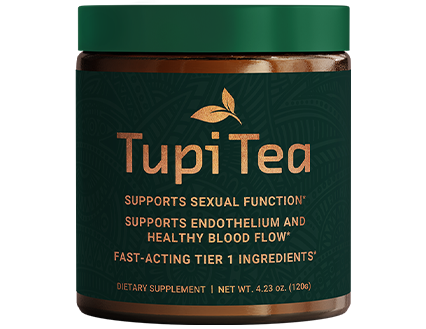
U.S. Scientists Discover Secret For Stamina & Virility At Any Age , Ingredients That May Help: bluecheck Support a healthy libido, bluecheck Support healthy stamina, bluecheck Support adequate nitric oxide production
Can smoking and alcohol consumption contribute to ED in Australia?
The Contribution of Smoking and Alcohol Consumption to Erectile Dysfunction (ED) in Australia
Erectile Dysfunction (ED) is a common condition that can be influenced by various lifestyle factors, including smoking and alcohol consumption. Both behaviors are prevalent in Australia and have been linked to numerous health issues, including ED. This comprehensive analysis explores how smoking and alcohol consumption contribute to the development and progression of ED in Australia, examining epidemiological data, underlying mechanisms, risk factors, diagnostic approaches, management strategies, and public health implications.
Smoking and Erectile Dysfunction
Prevalence of Smoking in Australia
- General Statistics: According to the Australian Institute of Health and Welfare (AIHW), the prevalence of smoking has been declining but remains significant, with about 14% of adults smoking daily.
- Gender Differences: Men are more likely to smoke than women, increasing their risk of smoking-related health issues, including ED.
Mechanisms Linking Smoking to ED
- Vascular Damage: Smoking damages blood vessels, leading to atherosclerosis (hardening and narrowing of the arteries), which reduces blood flow to the penis and impairs the ability to achieve and maintain an erection.
- Endothelial Dysfunction: Smoking impairs endothelial function, reducing the production of nitric oxide, a critical molecule for blood vessel dilation and erectile function.
- Oxidative Stress and Inflammation: Smoking increases oxidative stress and inflammation, which can damage the tissues and nerves involved in erectile function.
- Hormonal Changes: Smoking can affect hormone levels, including reducing testosterone levels, which are essential for sexual desire and erectile function.
Epidemiological Evidence
- Increased Risk: Numerous studies have shown a strong association between smoking and ED. Smokers are significantly more likely to develop ED compared to non-smokers.
- Dose-Response Relationship: There is a dose-response relationship between smoking and ED, with heavier smoking associated with a higher risk of developing ED.
Diagnostic Approaches
- Medical History: A comprehensive medical history should include questions about smoking habits to assess the risk of ED related to smoking.
- Physical Examination: Assessment of cardiovascular health and signs of vascular damage is crucial for identifying smoking-related ED.
- Laboratory Tests: Blood tests to measure hormone levels and markers of oxidative stress and inflammation can provide additional information.
Management Strategies
- Smoking Cessation: Encouraging and supporting smoking cessation is the most effective strategy for reducing the risk of ED. Quitting smoking can improve vascular health and erectile function.
- Medications: Medications such as PDE5 inhibitors (e.g., sildenafil, tadalafil) can be used to improve erectile function, particularly in men who are in the process of quitting smoking.
- Lifestyle Modifications: Adopting a healthy lifestyle, including a balanced diet and regular physical activity, can support smoking cessation efforts and improve overall health.
Alcohol Consumption and Erectile Dysfunction
Prevalence of Alcohol Consumption in Australia
- General Statistics: Alcohol consumption is widespread in Australia, with a significant proportion of adults drinking regularly. According to the AIHW, about 75% of adults consume alcohol, with varying patterns of use.
- Gender Differences: Men are more likely to engage in heavy drinking compared to women, increasing their risk of alcohol-related health issues, including ED.
Mechanisms Linking Alcohol to ED
- Short-Term Effects: Acute alcohol consumption can reduce inhibitions and anxiety, potentially improving sexual performance in the short term. However, excessive alcohol intake can impair erectile function by affecting the central nervous system and reducing blood flow to the penis.
- Long-Term Effects: Chronic heavy drinking can lead to liver damage, hormonal imbalances, and cardiovascular disease, all of which can contribute to ED.
- Neurotransmitter Imbalance: Alcohol affects neurotransmitter levels, including serotonin and dopamine, which are crucial for sexual arousal and erectile function.
- Hormonal Changes: Chronic alcohol consumption can lead to reduced testosterone levels, impacting libido and erectile function.
Epidemiological Evidence
- Increased Risk: Research indicates that heavy and chronic alcohol consumption is associated with a higher risk of ED. Men who consume large amounts of alcohol are more likely to experience ED compared to moderate or non-drinkers.
- Patterns of Drinking: Binge drinking and consistent heavy drinking are particularly associated with an increased risk of ED.
Diagnostic Approaches
- Medical History: A thorough medical history should include questions about alcohol consumption patterns to assess the risk of ED related to alcohol use.
- Physical Examination: Evaluation of liver function and signs of alcohol-related damage is essential for identifying alcohol-related ED.
- Laboratory Tests: Blood tests to measure liver enzymes, hormone levels, and other relevant biomarkers can provide additional information.
Management Strategies
- Moderation: Encouraging moderation in alcohol consumption is crucial. Limiting intake to moderate levels (up to two standard drinks per day for men) can reduce the risk of ED.
- Alcohol Cessation Programs: For men with alcohol dependence or heavy drinking habits, providing access to alcohol cessation programs and support groups is essential.
- Medications: PDE5 inhibitors can be used to improve erectile function in men who are reducing or moderating their alcohol consumption.
- Lifestyle Modifications: Promoting a healthy lifestyle, including regular exercise and a balanced diet, can support efforts to reduce alcohol consumption and improve overall health.
Combined Impact of Smoking and Alcohol on ED
- Synergistic Effects: Smoking and heavy alcohol consumption often coexist and can have synergistic effects on the development of ED. The combination of these behaviors significantly increases the risk of vascular damage, hormonal imbalances, and other health issues that contribute to ED.
- Lifestyle Interventions: Comprehensive lifestyle interventions that address both smoking and alcohol consumption are necessary for effectively reducing the risk of ED.
Public Health Implications
Awareness and Education
- Public Health Campaigns: Implementing public health campaigns to raise awareness about the impact of smoking and alcohol consumption on ED can encourage men to adopt healthier lifestyles.
- Educational Programs: Providing educational programs that emphasize the importance of quitting smoking and moderating alcohol intake for sexual health.
Access to Resources
- Smoking Cessation Programs: Ensuring access to smoking cessation programs, including counseling, medication, and support groups, to help men quit smoking.
- Alcohol Cessation Programs: Providing access to alcohol cessation programs and support services for men struggling with alcohol dependence.
Policy and Regulation
- Tobacco Control: Implementing and enforcing tobacco control policies, such as smoking bans, taxation, and advertising restrictions, to reduce smoking prevalence.
- Alcohol Regulation: Promoting policies that regulate alcohol availability and advertising, as well as public health campaigns to reduce excessive drinking.
Research and Future Directions
Longitudinal Studies
- Impact of Lifestyle Changes: Conducting longitudinal studies to evaluate the long-term impact of quitting smoking and moderating alcohol consumption on erectile function.
- Population-Specific Research: Investigating the impact of smoking and alcohol consumption on ED in different demographic groups to develop targeted interventions.
Innovative Approaches
- Digital Health Tools: Exploring the use of digital health tools, such as mobile apps and telemedicine, to support smoking cessation and alcohol reduction efforts.
- Integrative Care Models: Developing integrative care models that combine lifestyle interventions with medical treatments to optimize outcomes for men with ED.
Conclusion
Smoking and alcohol consumption are significant lifestyle factors that contribute to the development and progression of Erectile Dysfunction (ED) in men in Australia. Both behaviors have detrimental effects on vascular health, hormonal balance, and overall physical and mental well-being, increasing the risk of ED. Understanding the mechanisms, epidemiological evidence, and effective management strategies is crucial for addressing these risk factors. Public health initiatives, access to cessation programs, policy regulation, and ongoing research are essential components of a comprehensive approach to reducing the impact of smoking and alcohol consumption on ED and improving the quality of life for affected men.
References
- Australian Institute of Health and Welfare (AIHW). “Erectile Dysfunction.” Canberra: AIHW.
- Mayo Clinic. “Erectile Dysfunction (ED).” Available from: https://www.mayoclinic.org/
- NHS. “Erectile Dysfunction (Impotence).” Available from: https://www.nhs.uk/
- American Urological Association. “Erectile Dysfunction.” Available from: https://www.auanet.org/
- Cleveland Clinic. “Erectile Dysfunction.” Available from: https://my.clevelandclinic.org/
- National Institutes of Health (NIH). “Erectile Dysfunction.” Available from: https://www.niddk.nih.gov/
- WebMD. “Erectile Dysfunction (ED).” Available from: https://www.webmd.com/
- National Health and Medical Research Council (NHMRC). “Clinical Guidelines for Erectile Dysfunction.” Canberra: NHMRC.
- Heart Foundation. “Erectile Dysfunction and Cardiovascular Health.” Available from: https://www.heartfoundation.org.au/
- Australian Psychological Society (APS). “Psychological Treatment for Erectile Dysfunction.” Available from: https://www.psychology.org.au/
- Beyond Blue. “Depression, Anxiety, and Erectile Dysfunction.” Available from: https://www.beyondblue.org.au/
- Australian Government Department of Health. “National Tobacco Strategy.” Available from: https://www.health.gov.au/
- Australian Government Department of Health. “Alcohol Guidelines.” Available from: https://www.health.gov.au/
This detailed content covers how smoking and alcohol consumption contribute to ED in Australia, including mechanisms, prevalence, risk factors, diagnostic approaches, management strategies, and public health implications. Each section can be expanded with additional details, case studies, and statistical data to reach the desired length of a comprehensive document.

